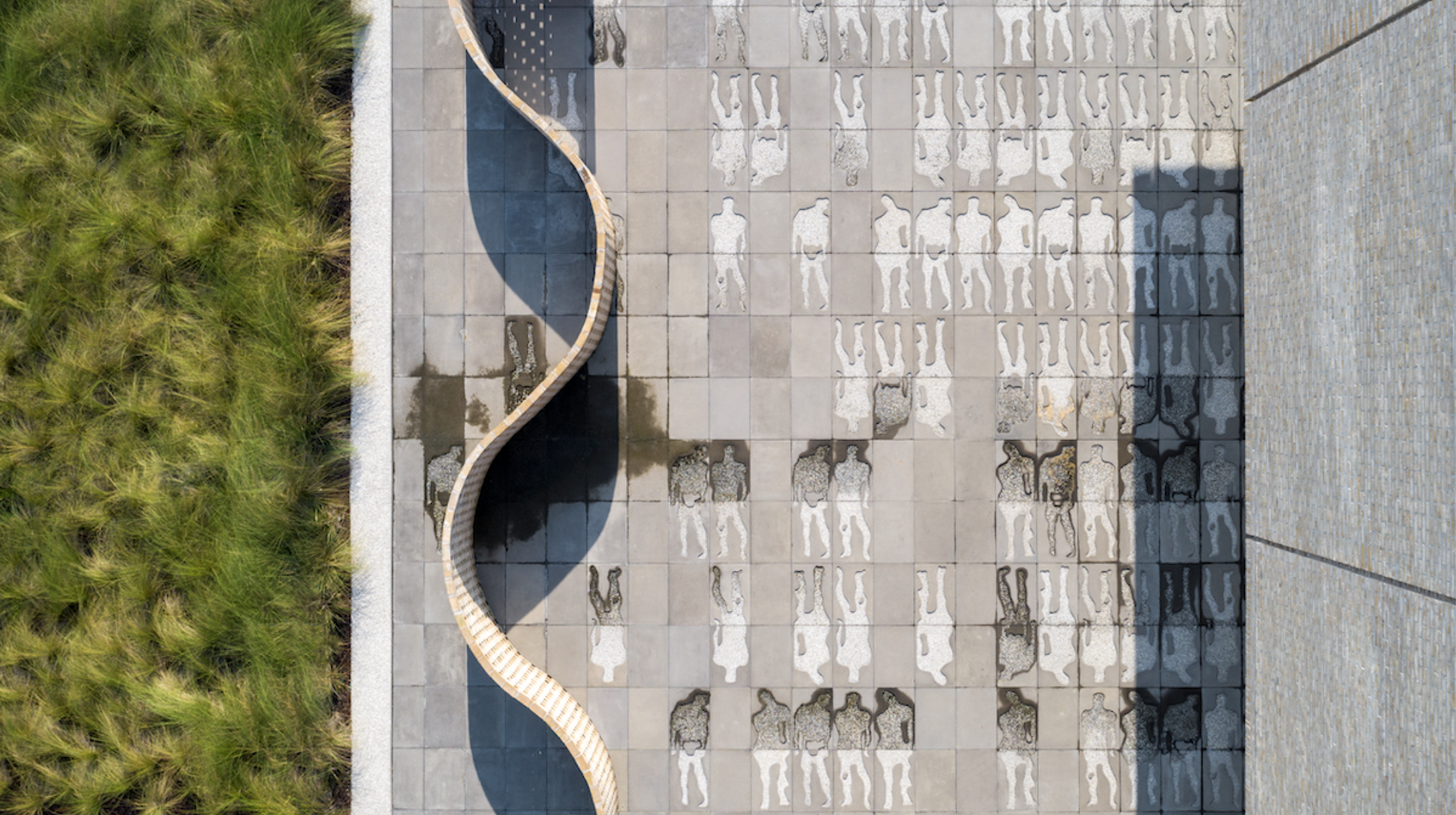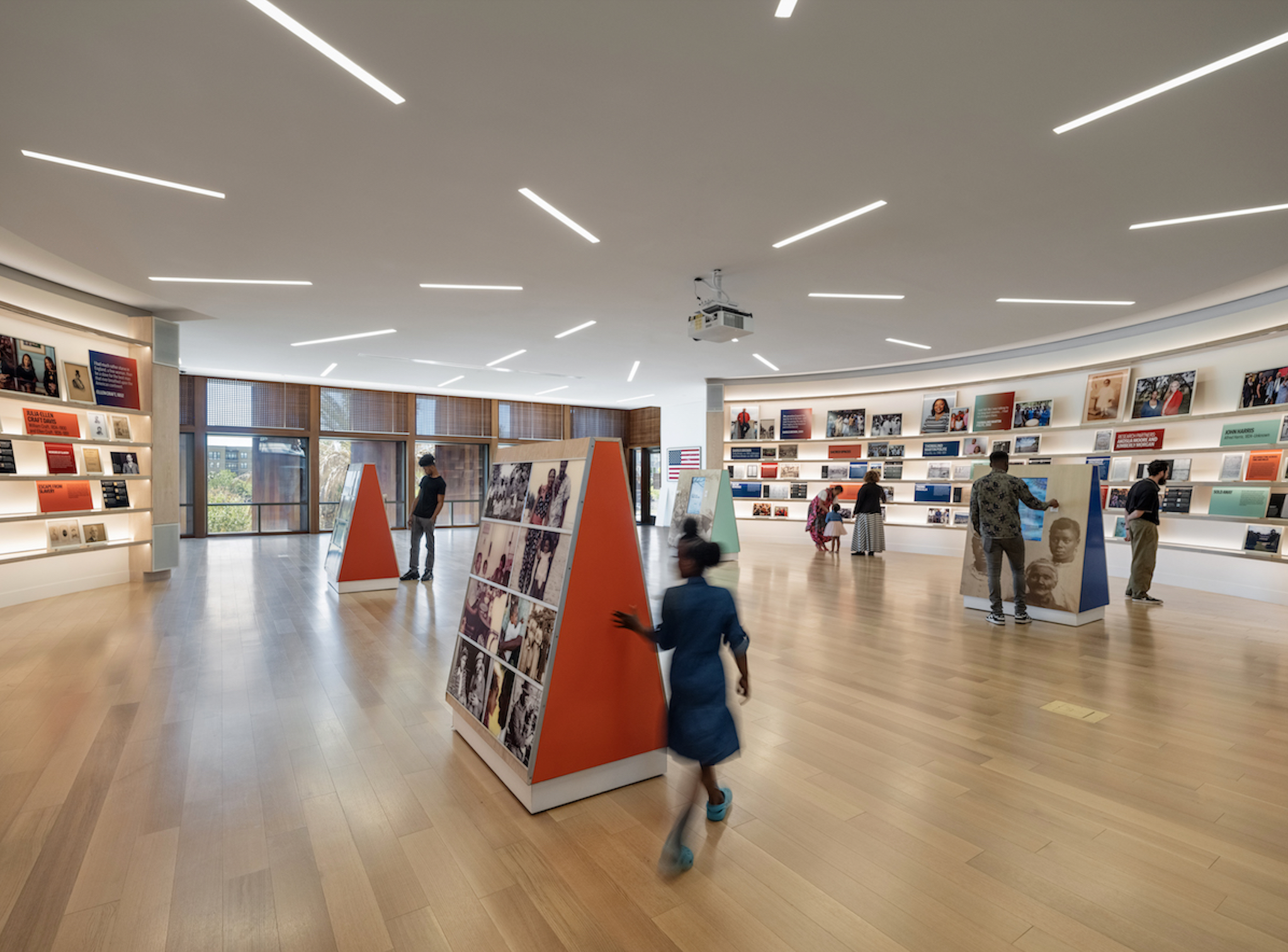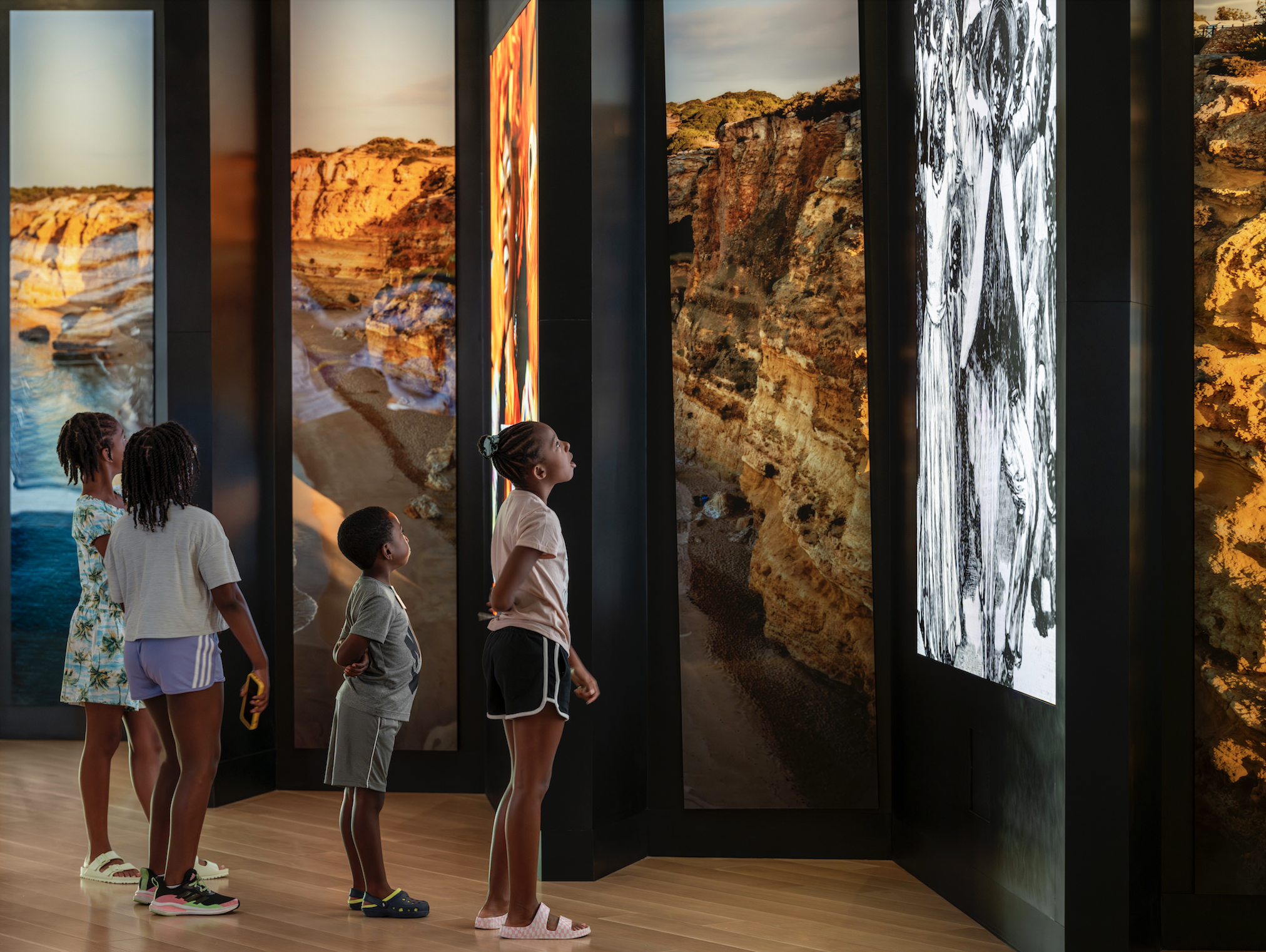Power of Place
the International African American Museum reveals sobering stories
By M. Linda Lee
A tattered dress, three handfuls of pecans, a braid of her mother’s hair. Those were the modest contents of a rough cotton sack given to a young girl named Ashley by her mother, Rose. Sold on the auction block in Charleston in the 1850s, 9-year-old Ashley never saw her mother again. But the sack, which Rose had so carefully filled with mementos of a mother’s love, survived.
In 1921, Rose’s great-granddaughter, Ruth Middleton, embroidered the front of the sack with the list of contents it once held, along with what may have been the last words Rose ever spoke to her daughter: “Told her, it be filled with my Love always.”
The sack turned up decades later in 2007 in a Tennessee flea market, where a woman purchased it and traced its origins to Middleton Plantation in Charleston, South Carolina. Today Ashley’s Sack forms part of the Carolina Gold exhibit at the new International African American Museum.
Ashley’s story is just one of many poignant accounts related throughout the museum’s nine galleries. Overall, they tell a harrowing tale of the African American experience, beginning with the grueling journey that carried captives across the Atlantic Ocean from their native countries to America. From 1670 to 1808, South Carolina received as many as 260,000 enslaved Africans—more than any other mainland colony. The majority of those disembarked at Gadsden’s Wharf, the largest single point of entry for enslaved Africans in America’s history. It is here that IAAM stands.
“The reality of the African American experience exists at the intersection of great trauma and tragedy and also triumph and joy.”
Designed by the New York firm of Pei Cobb Freed & Partners, the museum perches 13 feet above the wharf atop 18 cylindrical pillars, as the architects did not want the building to touch this hallowed ground. On the wharf where the captive Africans first set foot in America, the African Ancestors Memorial Garden includes the moving Tide Tribute, honoring those who did not survive the transatlantic trip. This is a place to pause before entering the museum, to reflect on the tabby figures—arranged as they would have been inside the ships’ cargo holds—submerged by the ebb and flow of the waters in the tribute’s pool.
Within the museum, two parallel lines of storytelling unravel: one organized as a timeline (from 1400 to present) in the West Wing; the other, a series of exhibits in the East Wing. The latter, explains Malika Pryor Martin, IAAM’s chief learning and engagement officer, “navigate people, place, and time from a local, national, or diasporic perspective.” Throughout, individual stories and achievements are related via historical artifacts, artworks, and interactive multimedia presentations.
“The reality of the African American experience exists at the intersection of great trauma and tragedy and also triumph and joy,” says Martin. From the cultures and customs of West Africa to the Gullah Geechee communities on the Carolina coast, it is this compelling human experience that knits the 11 permanent exhibits together.
“There will be a moment—we hope multiple moments,” Martin says, “where [visitors] are able to touch and be touched by the story.”
International African American Museum, 14 Wharfside St, Charleston. (843) 872-5352, iaamuseum.org






